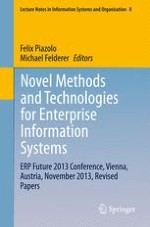2014 | OriginalPaper | Buchkapitel
On the Trade-Off Between Flexibility and Extensionality in the Decomposition of Business Process Models
verfasst von : Dirk Draheim
Erschienen in: Novel Methods and Technologies for Enterprise Information Systems
Aktivieren Sie unsere intelligente Suche, um passende Fachinhalte oder Patente zu finden.
Wählen Sie Textabschnitte aus um mit Künstlicher Intelligenz passenden Patente zu finden. powered by
Markieren Sie Textabschnitte, um KI-gestützt weitere passende Inhalte zu finden. powered by
